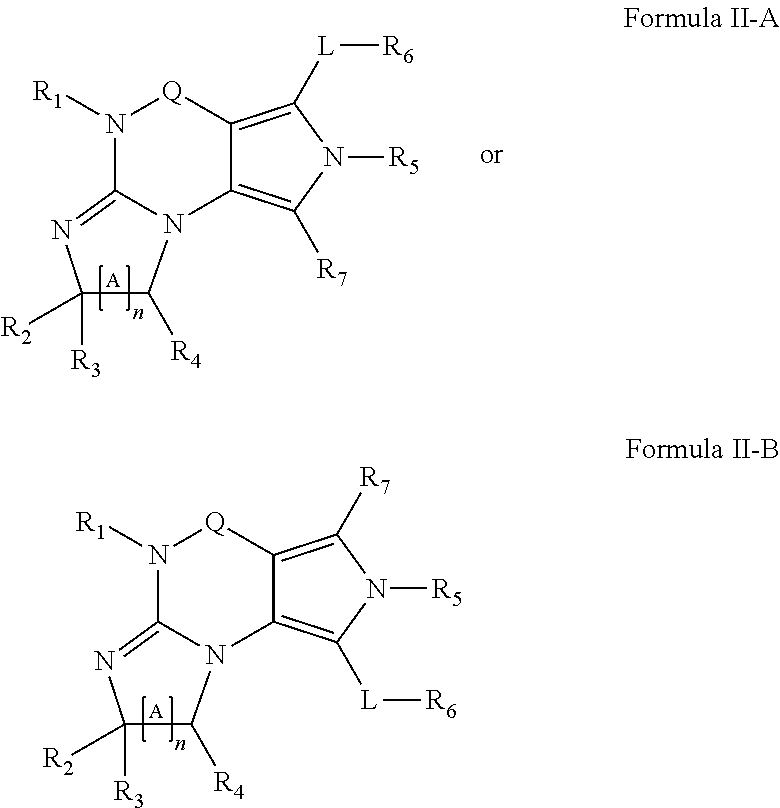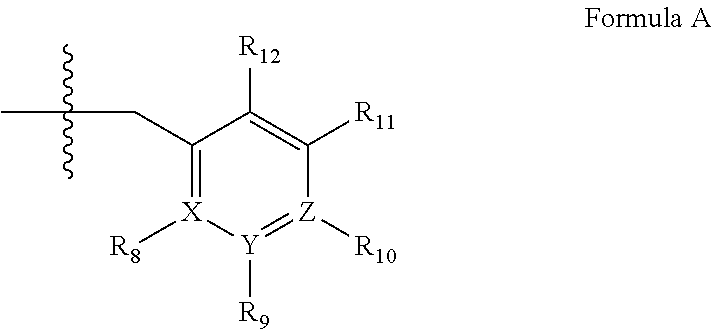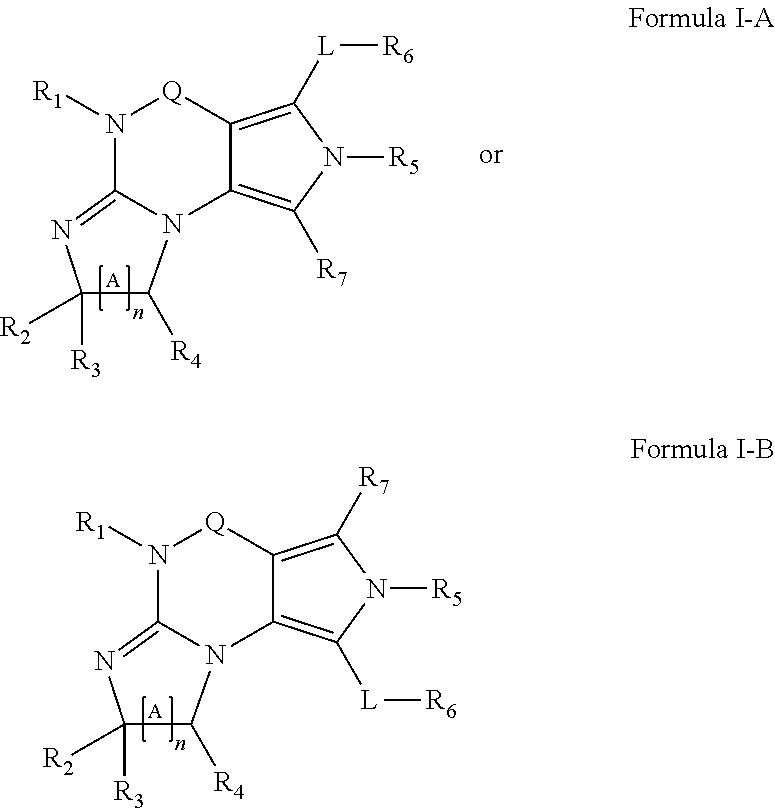Novel uses
a technology of cns disease and new use, applied in the field of cns disease treatment and/or prophylaxis, can solve the problems of failure of cns neuron regeneration, axon regeneration, and inability to overstate neurogenesis, so as to promote neurite outgrowth, increase intracellular camp, and enhance neurite outgrowth
- Summary
- Abstract
- Description
- Claims
- Application Information
AI Technical Summary
Benefits of technology
Problems solved by technology
Method used
Image
Examples
example 1
Measurement of PDEIB Inhibition In Vitro Using IMAP Phosphodiesterase Assay Kit
[0567]Phosphodiesterase I B (PDEIB) is a calcium / calmodulin dependent phosphodiesterase enzyme that converts cyclic guanosine monophosphate (cGMP) to 5′-guanosine monophosphate (5′-GMP). PDEIB can also convert a modified cGMP substrate, such as the fluorescent molecule cGMP-fluorescein, to the corresponding GMP-fluorescein. The generation of GMP-fluorescein from cGMP-fluorescein can be quantitated, using, for example, the IMAP (Molecular Devices, Sunnyvale, Calif.) immobilized-metal affinity particle reagent.
[0568]Briefly, the IMAP reagent binds with high affinity to the free 5′-phosphate that is found in GMP-fluorescein and not in cGMP-fluorescein. The resulting GMPfluorescein-IMAP complex is large relative to cGMP-5 fluorescein. Small fluorophores that are bound up in a large, slowly tumbling, complex can be distinguished from unbound fluorophores, because the photons emitted as they fluoresce retain th...
example 2
[0574]A selective PDE1 inhibitor of the present invention demonstrates microsomal stability in human microsomal stability assays. The aforementioned selective PDE1 inhibitor demonstrates a K value less than 0.005, and demonstrates a half-life of T½ of about 275 minutes.
example 3
[0575]A selective PDE1 inhibitor of the present invention demonstrates the ability to cross the blood-brain barrier. Following an injection of 10 mg / Kg in a suitable mouse model, the aforementioned selective PDE1 inhibitor is detectable at about 3 μM less than about 0.5 hours following the injection.
PUM
| Property | Measurement | Unit |
|---|---|---|
| temperature | aaaaa | aaaaa |
| pH | aaaaa | aaaaa |
| pH | aaaaa | aaaaa |
Abstract
Description
Claims
Application Information
 Login to View More
Login to View More - R&D
- Intellectual Property
- Life Sciences
- Materials
- Tech Scout
- Unparalleled Data Quality
- Higher Quality Content
- 60% Fewer Hallucinations
Browse by: Latest US Patents, China's latest patents, Technical Efficacy Thesaurus, Application Domain, Technology Topic, Popular Technical Reports.
© 2025 PatSnap. All rights reserved.Legal|Privacy policy|Modern Slavery Act Transparency Statement|Sitemap|About US| Contact US: help@patsnap.com



